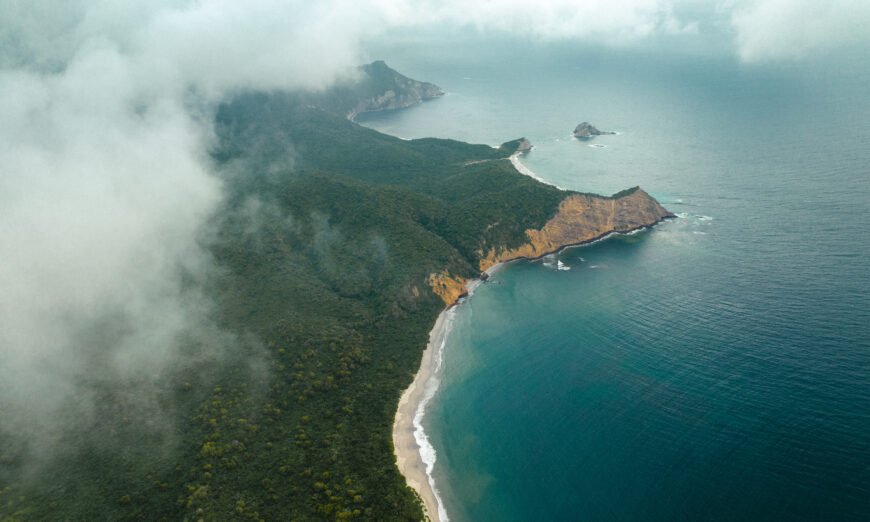 Ecuador is the smallest country in the rugged Andean highlands with its array of vibrant indigenous cultures, well preserved colonial architecture, volcanic landscapes and dense rainforest. It is one of the most biodiverse countries in the world, offering visitors an extraordinary range of landscapes and ecosystems packed into a relatively small area. Nestled on the western coast of South America, this country boasts four distinct regions: the legendary Galápagos Islands, the breathtaking Andes Mountains, the lush and mysterious Amazon Rainforest, and the picturesque Pacific Coast. Each region offers a unique experience for travellers, from hiking ancient volcanoes to exploring pristine rainforests and swimming alongside exotic marine life.
Ecuador is the smallest country in the rugged Andean highlands with its array of vibrant indigenous cultures, well preserved colonial architecture, volcanic landscapes and dense rainforest. It is one of the most biodiverse countries in the world, offering visitors an extraordinary range of landscapes and ecosystems packed into a relatively small area. Nestled on the western coast of South America, this country boasts four distinct regions: the legendary Galápagos Islands, the breathtaking Andes Mountains, the lush and mysterious Amazon Rainforest, and the picturesque Pacific Coast. Each region offers a unique experience for travellers, from hiking ancient volcanoes to exploring pristine rainforests and swimming alongside exotic marine life.
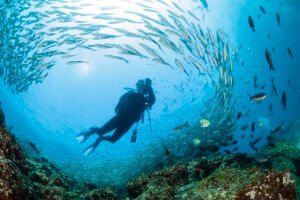
The Galápagos Islands: A Natural Laboratory of Evolution
The Galápagos Islands, a volcanic archipelago located 1,000 kilometres off Ecuador’s Pacific coast, are world-renowned for their unique biodiversity. Made famous by Charles Darwin’s visit in 1835 and his subsequent theory of evolution, these islands remain a haven for nature lovers, scientists, and adventure seekers. The Galápagos is one of the most well-preserved ecosystems in the world, protected by strict conservation efforts.The area of the islands is 3,086 square miles and only two of the islands are inhabited: Isabela, the largest of the group, and San Cristobal. Current estimated population in the islands is 20,000. The islands are hilly, rising to a height of 5,000 feet, and there are several active volcanoes.
The Galápagos Islands are home to an array of species found nowhere else on Earth. These include the iconic giant tortoises, blue-footed boobies, marine iguanas, and the only penguins found north of the equator, the Galápagos penguins. Visitors can explore the islands by land and sea, witnessing how the wildlife evolved in isolation. Marine activities are particularly popular in the Galápagos. Snorkelling and diving in the crystal-clear waters offer the chance to see vibrant coral reefs, sea lions, hammerhead sharks, and manta rays. Cruises provide multi-island experiences, allowing travellers to visit remote and uninhabited islands with expert naturalist guides.
 Activities and Attractions
Activities and Attractions
Land tours on islands like Santa Cruz, San Cristóbal, and Isabela offer hiking trails, where visitors can explore volcanic craters and pristine beaches. Some popular destinations include Tortuga Bay (known for its beautiful white sand beach) and Sierra Negra Volcano, which offers incredible panoramic views after a rewarding hike. The Charles Darwin Research Station in Santa Cruz provides an educational experience on conservation efforts and ongoing research. The islands’-controlled tourism ensures that their fragile environment remains preserved for future generations, so travellers are encouraged to respect local rules and regulations aimed at protecting this natural paradise.
………………………………………………………………………………………………………………………………….
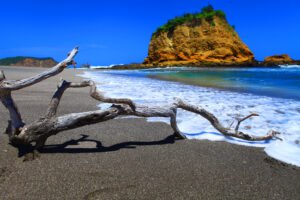 The Pacific Coast: Sun, Sand, and Secluded Beauty
The Pacific Coast: Sun, Sand, and Secluded Beauty
Ecuador’s Pacific Coast stretches for over 2,000 kilometres, offering a tropical climate and a laid-back atmosphere. This region is perfect for those who seek sun, sand, and relaxation, combined with eco-tourism and cultural experiences. The coastline varies from sandy beaches to rocky cliffs, and it is dotted with charming fishing villages, mangroves, and bustling port cities.
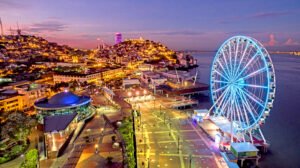 Coastal Attractions
Coastal Attractions
One of the most popular destinations on Ecuador’s coast is Montañita, famous for its surf breaks and bohemian vibe. Known internationally among surfers, Montañita attracts both beginners and experts looking for consistent waves and a vibrant nightlife scene. For a more tranquil experience, visitors can head to Puerto López, a peaceful coastal town that serves as the gateway to Machalilla National Park. This park encompasses both land and marine areas and is home to Isla de la Plata, sometimes referred to as “the poor man’s Galápagos” for its similar wildlife, including frigate birds, blue-footed boobies, and humpback whales. Salinas, often compared to Miami Beach, offers luxury resorts, bustling marinas, and a vibrant atmosphere. It’s a hotspot for water sports, from jet skiing to sport fishing. For a more relaxed beach getaway, Canoa is an excellent choice, providing unspoiled beaches perfect for swimming, beachcombing, and experiencing coastal Ecuadorian life.
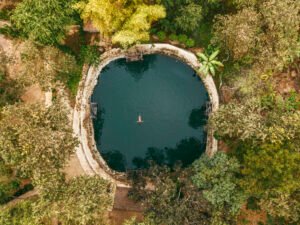 Eco-Tourism and Wildlife
Eco-Tourism and Wildlife
The coastal region is rich in marine life, and whale watching is a top activity from June to September, when humpback whales migrate through Ecuador’s waters. Additionally, mangrove swamps provide vital habitats for a range of bird species and marine life. Eco-tourism is growing in popularity along the coast, with numerous eco-lodges offering sustainable accommodations and activities like birdwatching and exploring protected wetlands.
………………………………………………………………………………………………………………………..
 The Andes Mountains: Majestic Peaks and Indigenous Culture
The Andes Mountains: Majestic Peaks and Indigenous Culture
The Andes Mountains, also known as the “Avenue of Volcanoes,” stretch down the spine of Ecuador, offering some of the most stunning landscapes and rich cultural experiences. Towering volcanoes, verdant valleys, and vibrant indigenous markets characterize this region, which is ideal for trekking, sightseeing, and immersing oneself in traditional Ecuadorian life.
 Quito and the Northern Andes
Quito and the Northern Andes
Ecuador’s capital, Quito, is located in the heart of the northern Andes. As the world’s second-highest capital, Quito is perched at an elevation of 2,850 meters and is surrounded by snow-capped peaks and volcanoes, including Pichincha and Cotopaxi. Quito’s historic centre is a UNESCO World Heritage Site, known for its well-preserved colonial architecture, churches, and vibrant plazas. Most attractive is the main square, Plaza Mayor, with its seventeenth-century cathedral, government palaces, municipal hall, and other buildings. Quito is well known for its many small workshops producing native arts and for its outdoor Indian markets.A short drive from Quito, the Cotopaxi National Park offers visitors the chance to trek or cycle through the high-altitude landscapes, explore glaciers, and take in the stunning views of Cotopaxi Volcano, one of the highest active volcanoes in the world. In the northern Andes, visitors can also explore the famous indigenous market town of Otavalo, where traditional textiles, crafts, and jewellery are sold.
 Southern Andes: Cuenca and Beyond
Southern Andes: Cuenca and Beyond
Further south, the city of Cuenca, another UNESCO World Heritage Site, enchants visitors with its cobblestone streets, colonial churches, and vibrant cultural scene. Cuenca is the artistic and cultural heart of the southern Andes, home to numerous galleries, artisan shops, and local festivals. Nearby, the Cajas National Park offers hiking trails through páramo landscapes, glacial lakes, and cloud forests, providing a haven for birdwatchers and nature lovers. The Quilotoa Loop, a remote Andean hiking trail, takes travellers through indigenous villages, past stunning volcanic lakes like Laguna Quilotoa, and offers immersive experiences in the lives of Ecuador’s highland communities.Panama hats are the trademark of Cuenca, Ecuador’s third-largest city. Panama hats were first made there. The city still maintains the Andean small-town aura. The city has year-round spring-like climate that makes it a favourite tourist destination in Ecuador. The town has an Old World, Spanish colonial feel.
 Indigenous Culture and Traditions
Indigenous Culture and Traditions
The Andes are home to many of Ecuador’s indigenous communities, who have preserved their language, customs, and way of life over centuries. The region is dotted with vibrant markets and festivals where visitors can experience traditional music, dance, and food. The Inti Raymi festival, celebrating the Incan sun god, is one of the most important events in the Andean calendar and is marked by processions, feasting, and rituals.
…………………………………………………………………………………………………………………………..
The Amazon Rainforest: A Journey into the Heart of Biodiversity
Ecuador’s Amazon Rainforest, known locally as El Oriente, is one of the most biodiverse places on the planet. Located in the eastern part of the country, this region is a must-visit for nature enthusiasts, offering the chance to explore a world of towering trees, winding rivers, and an astonishing variety of wildlife.
Wildlife and Conservation
The Amazon region is home to an incredible array of species, including jaguars, pumas, monkeys, caimans, and an endless variety of bird species like toucans, parrots, and macaws. The rivers teem with exotic fish, and visitors may even spot the elusive pink river dolphins. Eco-lodges and guided tours offer travellers the chance to trek through the rainforest, navigate rivers by canoe, and learn about the flora and fauna from local guides. The Yasuni National Park, a UNESCO Biosphere Reserve, is one of the most biodiverse places on Earth. Yasuni is home to a variety of indigenous groups, including the Waorani people, and it is a stronghold for conservation efforts that seek to protect both the land and its inhabitants from deforestation and oil exploration.
Adventure and Ecotourism
In addition to its rich biodiversity, the Amazon offers a range of adventure activities, including canopy walks, zip-lining, kayaking, and night hikes to observe nocturnal wildlife. Visitors can also engage with indigenous communities, learning about their way of life, traditional medicine, and sustainable living practices. For a deeper experience, many lodges in the region focus on eco-tourism, emphasizing sustainability and providing educational experiences that foster a greater appreciation for the delicate balance of the rainforest ecosystem.

Conclusion: Discover the Diversity of Ecuador
Ecuador offers a rich tapestry of landscapes and experiences, from the volcanic islands of the Galápagos to the towering Andes and the dense Amazon rainforest. Each region provides its own unique journey into nature, culture, and adventure. Whether you’re swimming with sea lions, hiking up a volcano, or navigating the Amazon’s winding rivers, Ecuador’s diverse beauty is sure to captivate and inspire.This small yet incredibly diverse country is truly a microcosm of the natural world, offering unforgettable experiences for every kind of traveller.

